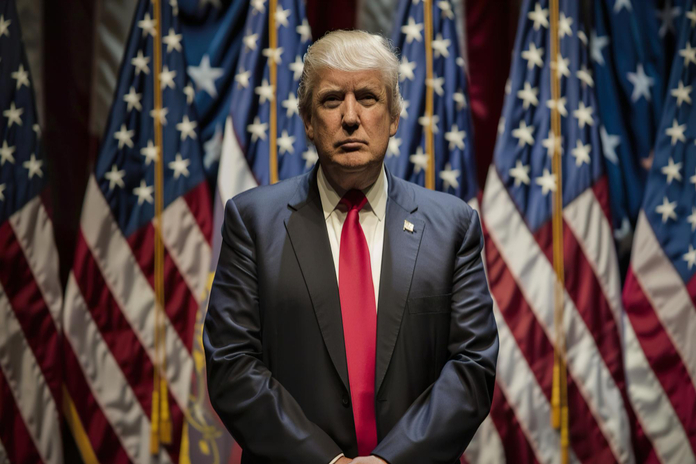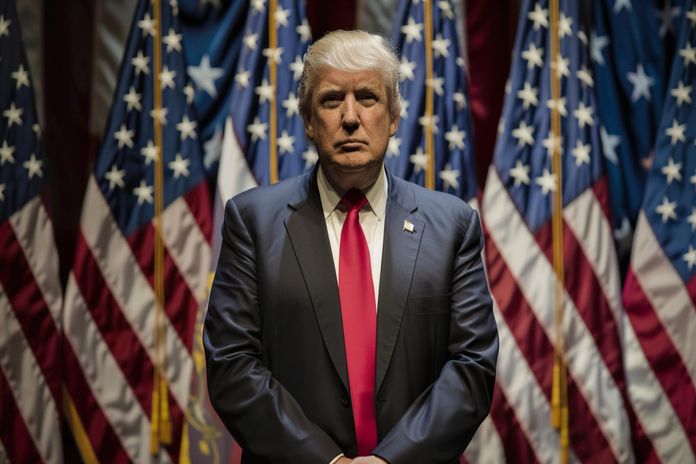Trump Bitcoin Strategy Accelerates

Donald Trump is making waves in the crypto world again. Speaking at the Digital Asset Summit in New York, Trump declared an end to the “regulatory war on crypto,” signaling a dramatic shift in U.S. policy. His plan? Establish a clear regulatory framework for stablecoins and digital assets while pushing Congress to pass landmark legislation. This bold move follows his recent executive order establishing a Strategic Bitcoin Reserve, aimed at cementing America’s leadership in digital finance.
Trump’s Push for Regulatory Clarity
At the core of Trump’s Bitcoin strategy is the desire to provide clear, common-sense regulations that foster innovation while protecting investors. His call to action has put immense pressure on Congress to pass stablecoin legislation and provide a comprehensive market structure for crypto assets.
Trump’s message resonated with lawmakers, with the Senate recently advancing the GENIUS Act, a stablecoin-focused bill that received bipartisan support. This legislation would regulate privately issued stablecoins pegged to the U.S. dollar, ensuring transparency and stability in the market. A full vote is expected next month, and if passed, it could pave the way for widespread institutional adoption.
Strategic Bitcoin Reserve: A Game-Changer?
In a landmark move, Trump signed an executive order earlier this month to create a Strategic Bitcoin Reserve, aimed at securing a significant supply of digital assets for the U.S. government. This move fulfills a campaign promise designed to strengthen America’s financial position by diversifying its reserves with Bitcoin (BTC-USD).
Senator Cynthia Lummis is driving the momentum further with her BITCOIN Act, which would allocate up to $80 billion in Bitcoin acquisitions for the U.S. government. In the House, Rep. Byron Donalds is proposing a parallel bill that would allow the Treasury and Commerce Departments to add Bitcoin to federal reserves, provided the purchases remain budget-neutral.
These legislative moves highlight Trump’s broader strategy to integrate digital assets into the U.S. financial system, positioning the country as a global leader in blockchain innovation.
Wall Street’s Mixed Reaction to Trump’s Bitcoin Strategy
The market’s response to Trump’s Bitcoin strategy has been a blend of optimism and caution. Bitcoin surged immediately following Trump’s remarks, reflecting investor excitement over the prospect of regulatory clarity and government adoption. However, the rally was short-lived as concerns over the potential long-term implications of government involvement caused some pullback.
Institutional investors, who have long awaited clearer guidelines for digital assets, see this shift as a positive sign. With regulatory uncertainty fading, major Wall Street firms are expected to increase their exposure to cryptocurrencies, potentially driving a new wave of institutional capital into the market.
Potential Impact on Institutional Adoption
If Trump’s Bitcoin strategy succeeds in establishing a favorable regulatory framework, it could unlock massive opportunities for institutional adoption. Major asset managers and hedge funds, who have been cautiously observing the crypto market, may finally have the green light to dive in.
A regulated environment would also attract traditional financial institutions like JPMorgan Chase & Co. (NYSE:JPM) and Goldman Sachs Group Inc. (NYSE:GS), both of which have shown growing interest in offering crypto-related services to clients. This influx of institutional capital could drive Bitcoin’s price higher, potentially pushing it to new all-time highs.
Legislation Could Usher in a New Era for Crypto
The passage of the GENIUS Act and the BITCOIN Act could mark a turning point for the crypto industry. These bills aim to provide the much-needed regulatory clarity that the market has been craving, setting the stage for long-term growth and stability.
If these initiatives succeed, the U.S. could become a global hub for digital finance, attracting talent, innovation, and capital from around the world. Moreover, by integrating Bitcoin into federal reserves, the U.S. would signal its confidence in the future of blockchain technology and decentralized finance.
What’s Next for Trump’s Bitcoin Strategy?
While the road to full adoption is far from smooth, Trump’s Bitcoin strategy has set the wheels in motion for a seismic shift in U.S. financial policy. With bipartisan support building around key legislation and institutional interest growing, the coming months could be transformative for the crypto market.
For investors, the message is clear: the crypto revolution is no longer on the horizon — it’s happening now. Keeping a close eye on legislative developments and market reactions will be critical for those looking to capitalize on the next wave of digital asset growth.
Conclusion: A Defining Moment for U.S. Crypto Policy
Trump’s Bitcoin strategy is reshaping the future of cryptocurrency in the U.S. By advocating for regulatory clarity and pushing for the integration of Bitcoin into federal reserves, Trump is positioning America as a leader in the digital finance revolution. As legislation advances and institutional adoption gains traction, the U.S. crypto landscape may be on the brink of a historic transformation.
Featured Image: Freepik




